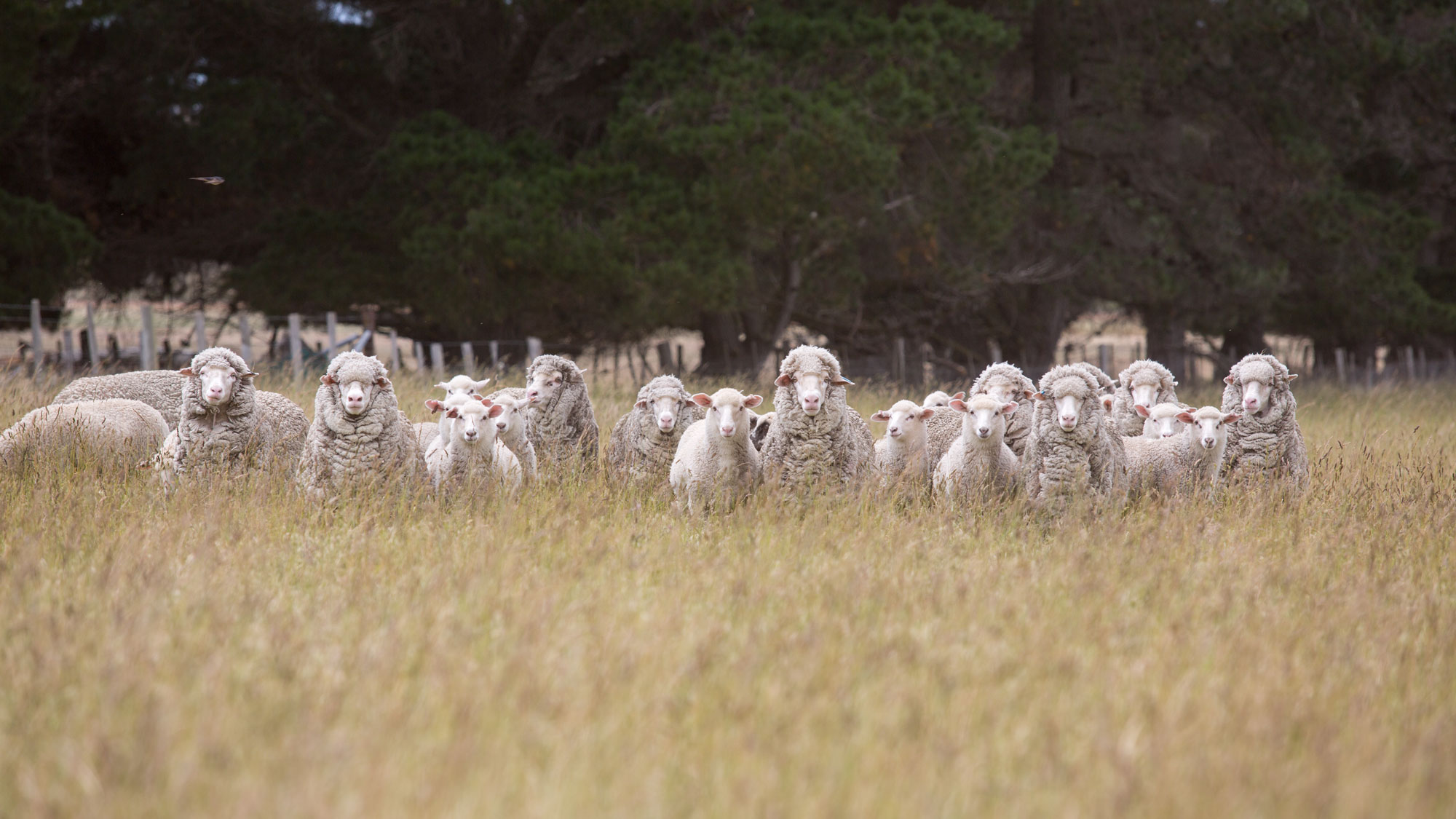Tool 8.6 Getting started in simple rotational grazing
A rotational grazing system can improve pasture production, utilisation and persistence. Moving stock around a small number of paddocks, grazing each for a fixed time, is an easy way to get started. This simple approach can be introduced to trial the system and build confidence.
Tactics
To start a simple 4-paddock rotation:
- Combine animals from 4 paddocks into one mob or subdivide a single paddock into 4 smaller paddocks with temporary electric fences.
- Rotate stock around the 4 paddocks in a general program of 2 weeks grazing and 6 weeks rest.
- Managers of native pastures have successfully used 2-paddock rotations (4 weeks graze, 4-weeks rest) and four-paddock rotation (4 weeks graze, 12 weeks rest).
- To get a rotational grazing system underway after the autumn break may require stock to be fed in a containment area to allow the pasture to reach 800-1000 kg/ha and grow more quickly. Depending on seasonal conditions and location, this may take 3-4 weeks but should be monitored and measured. The rotational grazing system can then start perhaps with 1 week grazing on each paddock gradually increasing to reach 2 weeks grazing, 6 weeks rest over winter.
- Over winter and at the break of season, supplementary feed will be required if the paddock feed is insufficient to meet animal requirements. Another option is to use forage crops to fill the winter feed gap which is likely in most systems due to low rainfall or cold temperatures and decreased sunlight hours causing pasture growth rates to slow.
- Stock may need to be moved weekly in spring (1 week graze, 3 weeks rest) to keep pastures in the growth phase for as long as possible and ensure that the pasture is eaten before it becomes rank and unpalatable. One paddock can be shut out of the rotation for cutting silage or hay, building up a feed wedge or for growth in the other 3 paddocks to be managed more efficiently.
- After a trial period, modifications can be made to the system.
Four-paddock rotation during moderate pasture growth
Four-paddock rotation during fast growth (spring)

Source: MLA Getting started with simple time-based rotational grazing, adapted by AWI
Further information is contained in MLA Tips & Tools Getting started in simple time-based rotational grazing.
EverGraze developed the Feedbase Planning and Budgeting tool to help plan rotational grazing systems, determine appropriate stocking rates, determine how long your paddocks will last and calculate the most economical ration for your stock.
Management tips
Measure and monitor
- Ongoing assessment of pastures and animals is best management practice in any grazing system.
- The pasture should be monitored to estimate the amount of pasture remaining when livestock are moved. This provides an indication of the degree of under or over-grazing.
Setting up
- Keep costs low at first. Use as much of the existing fencing infrastructure and watering systems on the property as possible.
When to start
- Any time of the year except during lambing. The break of season often provides an ideal time to defer grazing some paddocks to allow pastures to start growing.
Livestock
- Start the rotation with mature dry stock (dry ewes, wethers or steers). These will be less affected by any feed restrictions. Alternatively, steers can be run with heifers or sheep and cattle grazed together to make up the grazing mobs.
Water
- Sufficient supply of high-quality water must be considered if implementing a rotational grazing system. If mob sizes are 3-4 times greater than previously, pipelines and troughs must be adequate to provide access to the increased number of stock. Laneways can be used to provide water points to several paddocks. NSW Department of Primary Industries have a comprehensive handbook called AgGuide: Farm water which can be ordered online for $30.00.
- Access to water may not be as important for dry stock during winter in winter rainfall zones when pasture often contains over 75% moisture and stock usually drink little water.
Fences
- Use temporary electric fencing to keep cost to a minimum.
Go slow
- Simple trialling can be a key to success. The first year can be used to train stock, set-up a routine and build confidence in the management routine.
- Seek advice from someone with practical experience during the start-up phase.
What can go wrong
- When stock over-graze a paddock, they damage the pasture base.
- If there is not sufficient rest period for regrowth between grazing, total pasture production can be seriously reduced. Rest periods should be at least 3 weeks for rapidly growing pasture, and 6 weeks at other times. Reduce stock numbers by selling excess stock or feeding stock in a containment area.
- Have a management plan to cover late autumn breaks, wet, cold winters, dry springs, and drought.






